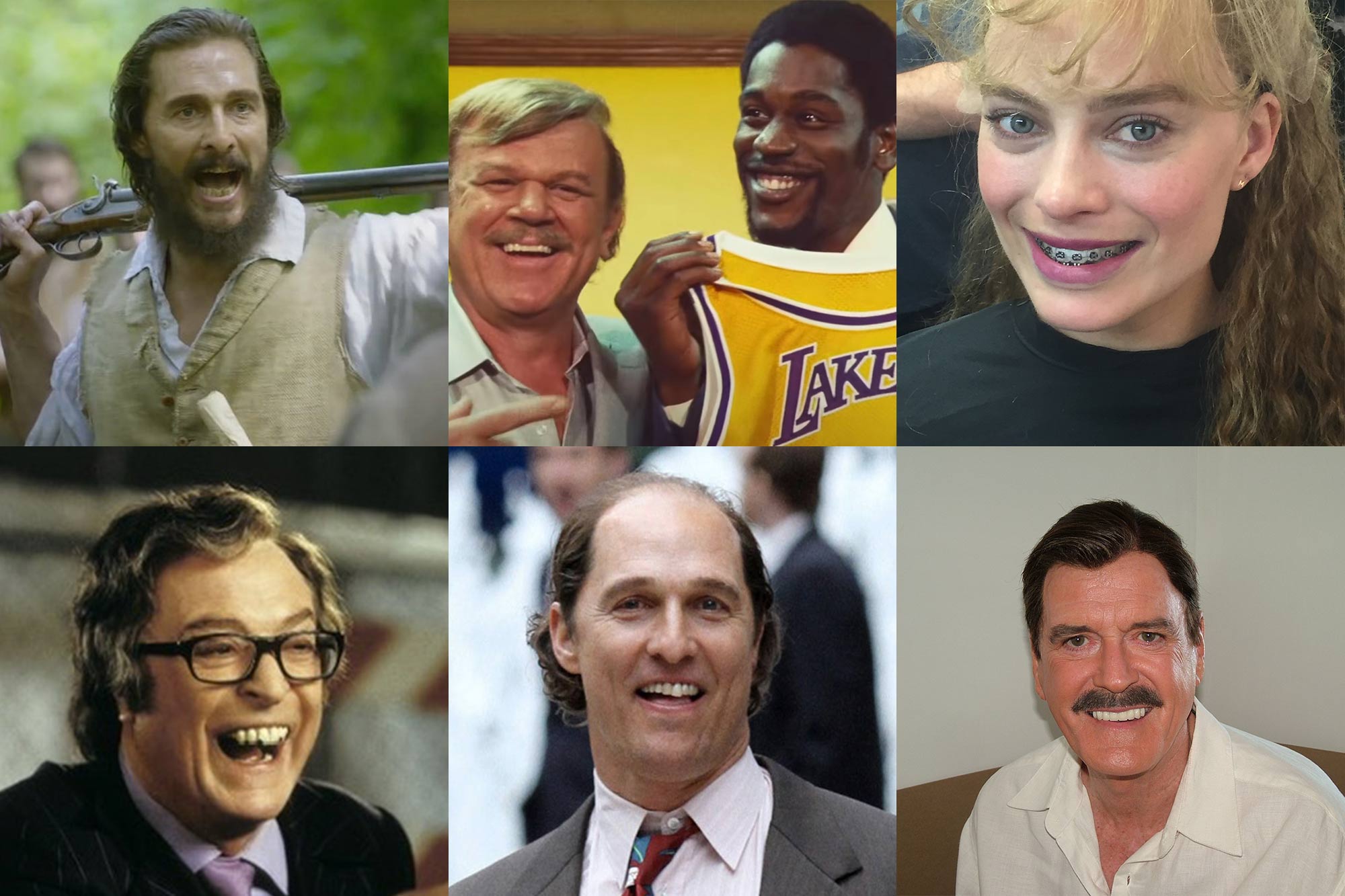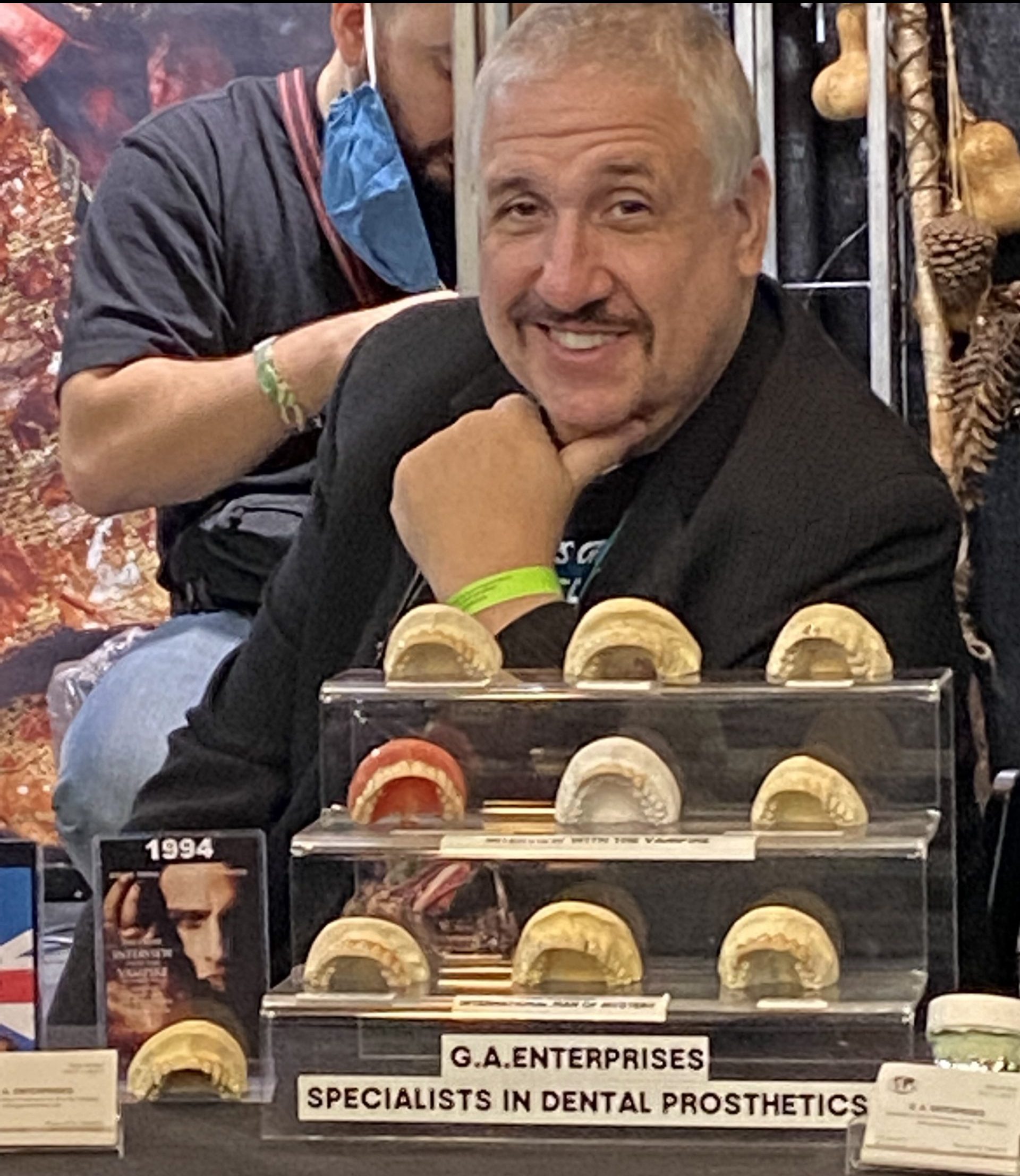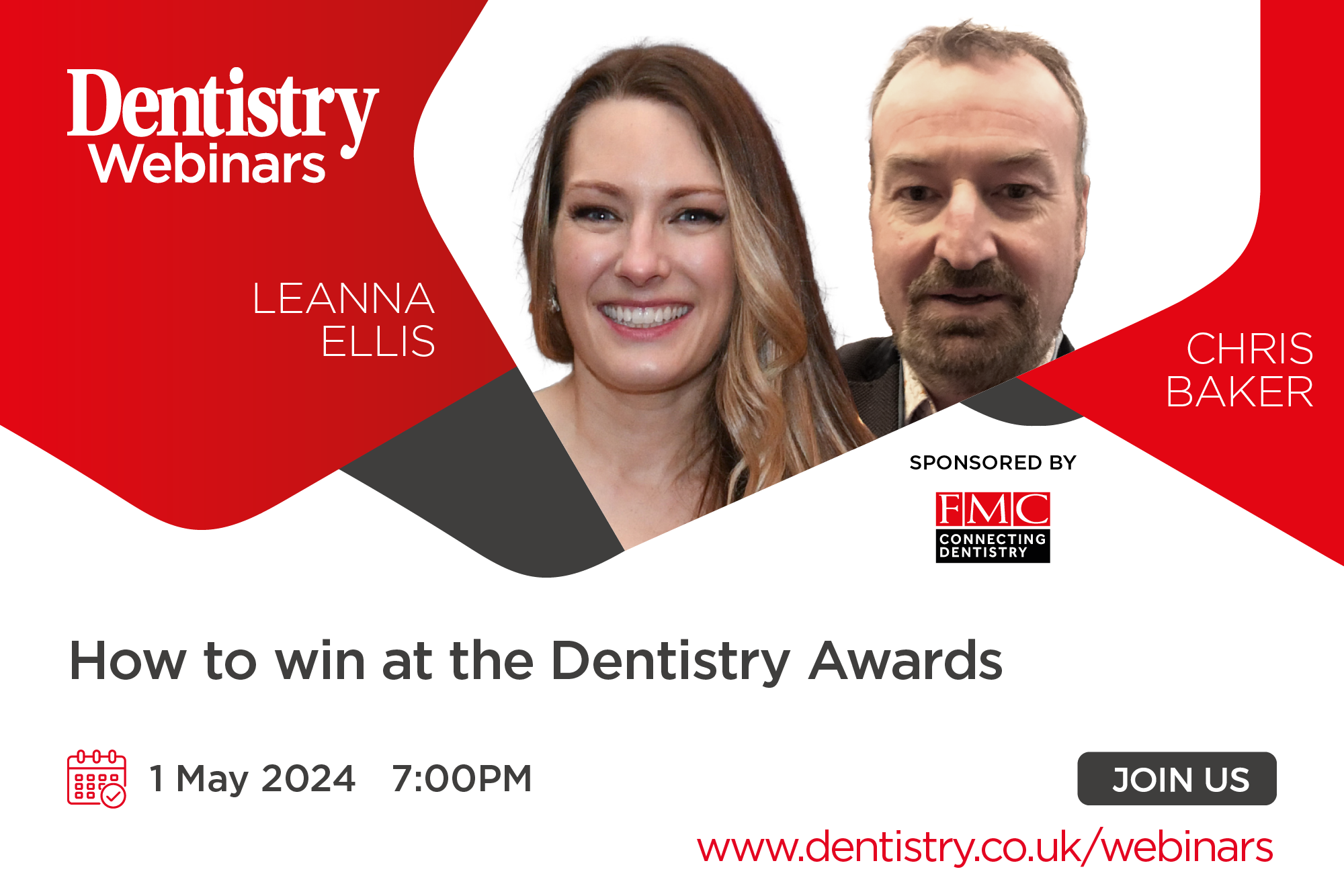
From Austin Powers’ iconic ghastly teeth to Mrs Doubtfire’s loose dentures – dental technician Gary Archer has done it all. We spoke to him about his favourite memories in the film and television industry, and how he has become a pioneer in the FX profession.
How did you decide to become a dental technician?
Well, I didn’t. That’s the odd story.
My father was a master technician. He learned the trade in London and he had a huge dental lab in Hackney Road which he ended up selling off when we came to America. He opened up again over here in California.
When I left school, I had no idea what I wanted to do. I tried a few different things but nothing seemed to fit. So I ended up going into the business when I was about 19.
Dad ended up getting ill, so I basically ended up coming in to mind the shop. I picked up a lot of things that were going on from other technicians at the lab.
When dad came back, he said: ‘Do you want to stay?’
And I said: ‘Yeah, seems like a good idea until something else comes up.’ But nothing else ever did.
So I became a dental technician, just doing removables.
How did you get into FX work?
We got a phone call back in the early 90s from one of our dentists. One of his patients turned out to be Greg Cannom, an award-winning American FX artist.
He asked us if we could make a set of teeth that would fall out of somebody’s mouth into a glass of water. That turned out to be for Robin Williams in Mrs Doubtfire.
And from there it really took off.
Greg liked what we did, he told someone else, and they told someone else and so on and so on. We ended up starting to do all these FX because nobody at the time was really doing good dental FX stuff.
What does your job involve – what does a typical work day look like for you?
Nowadays I’m not doing anywhere near as much regular dental technology as I used to.
Dan and I had a very busy lab. At one point we serviced almost 70 dentists across the country. Obviously we’ve scaled that down as time has gone on – a lot of the dentists either sold their practices, retired, or in some cases passed away, and eventually my dad also retired.
I would say about 75% of what I do now is special effects and about 25% is regular dentistry.
With all due respect to the dental industry, the difference between doing special effects and regular dentistry is I seem to get paid more for what I feel it’s worth with FX jobs. So I do less work and make a better living doing it!

My normal day starts with answering emails from production companies, effects artists and makeup studios in the morning. They’ll be asking me all sorts of things. Can we make this, can we make that? Or they’ve got a film that people need teeth on, can we handle doing it? What’s the best way to doing this?
Then usually I get into the lab between 10:00 and 11:00 and get started on work – fabricating things, designing things, manufacturing things. I’m basically running two businesses with one person.
So I’m kind of jumping backwards and forwards depending on what’s coming in and what I have on the agenda. At the moment I’ve got seven different theatrical/film/television productions that we’re making teeth for.
Also a lot of the things we do now are digital. So I don’t even have to see the clients. They’re getting their teeth scanned, in New York or Atlanta or wherever in the world they happen to be, we print the 3D models and manufacture the prosthetics on precise duplicated copies.
Then we send them off to production who hand them off to the makeup department and they proceed to do the rest of the makeup and add whatever other prosthetics are required. It all gets put together in the makeup trailer and then they go to set and they film everything – that’s how it all goes together.
What do you enjoy most about it?
I really love seeing our work on the screen. I enjoy seeing the big picture with the work we’ve done combined with what all the makeup artists and the effects shops have been able to do.
For example, in the new Interview with the Vampire series, we were asked by Howard Berger of KNB FX to make the teeth. Production had cast talent on three different continents that we had very limited access to (due to Covid lockdowns), so we enlisted the help of two amazing FX dental techs, Dominic Mombrun in the UK and Jac Charlton down under in Australia, who helped us pull it all together.
So to see the fangs on television in conjunction with all the makeup and visual effects, background, scenery, costumes and everything, was very satisfying.
And the other thing that I always like is when somebody sees a film or series that I worked on and they’ll ask me, ‘Did you make teeth for that?’ And a lot of times there will be work that I post online and people will go: ‘Oh, I didn’t realise so and so was wearing teeth.’
That tells me that I’ve done a really good job because, if somebody can’t tell that they were fake teeth, then the illusion and the transformation of the character is complete.
What are you most proud of?
The fact that I’ve been able to contribute to the FX and the movie industry by combining my knowledge of dental technology and creating new techniques.
One of the things that I came up with was a new way of making fake braces. Before, they were bonded to wires that would clip into the mouth. People would solder the brackets to the wire and put it into the mouth on a retainer. That was an awful lot of wire, and we basically got rid of all of that.
I started to manufacture fake braces by putting them on invisible vacuform templates. This is now common knowledge and umpteen different people have copied it. And that was my thing.
I’m glad that I was able to do that and sort of pioneer things in the industry – coming up with ways to make productions look better and also to improve safety. The biggest thing that I want to do is protect the talents’ teeth.
And a lot of talent that we work for have had multiple restorations, a mouthful of crowns, beautiful white Hollywood smiles. The last thing you want to do is possibly damage them.
Another thing that we came up with was the Vacuform stain templates. Before, makeup people were putting mouth stains directly on people’s teeth. On one occasion I remember a production company put something that they shouldn’t have put on an actor’s teeth and it stained a porcelain veneer. It was an extremely expensive mistake on their part.
And another thing we came up with was something called a safety grill. Metal grills are the gold grills that rappers and people wear. The talent would just have a metal piece that goes over their own teeth.
But putting metal over normal dentition is never a great idea because metal is so hard and teeth have got undercuts and they’re fragile. I had gentleman in who had a grill made for him, but his teeth were not straight and he had a lot of undercut. When he put the grill in, it jammed and one of his centrals fractured and it had a 45 degree chip.
We came up with this idea of a safety grill which basically places a thin layer of acrylic between the metal and the teeth. That’s probably one of my bigger contributions to the FX industry.
What’s been your favourite memory/experience?
My favourite memory has got to be doing the teeth for Mike Myers in the Austin Powers trilogy. That’s probably my all-time favourite set. I love the fact that I got to create those from the ground up.
Mike came to us before the original Austin Powers and said he wanted these prototypical British 1960s bad-looking teeth. We sat around and talked about it a little bit about ideas.
I went to a pub that I used to go to in the valley where I live. There were a few customers that I knew in there and they didn’t have the best teeth… So I sat there and did some sketches and came up with a composite idea for Mike.
I made the first sets, tried them in and Mike loved them. He said, ‘Don’t change anything!’ So we made them in three different styles. There was somewhat bad, there was bad, and then there was very bad. It was just the combination of how crossed over and stained and how much gap there was. He took those and ran with them and made them famous!
To this day people still talk to me about it. I will always be indebted to Mike Myers for bringing me onto the show. I love those teeth and I’m probably most proud of those out of any of project.
What film or television series have you enjoyed working on the most?
Well, there was the original Interview with the Vampire that I did in 1993. We did all the fangs for that. I loved doing that.
Then I did the Blade trilogy. We did all the teeth for Wesley Snipes.
And then obviously Austin Powers, which has been one of my favourites.
I’ve worked on so many series, hundreds of them. I’ve got over 300 on my IMDB page. And I know there’s at least another hundred that I’ve forgotten about which never got listed.
Plus, I do umpteen television commercials. I’ve done national McDonald’s commercials with young kids with sets of braces. Commercials are always fun because they’re something different.
But I love doing everything. Any series is always a lot of fun.

If you could work on any film or TV series, what would it be?
I don’t know. I’ve pretty much worked on everything that I’d want to.
I’ve done Marvel, I’ve done Star Wars stuff – I’ve pretty much ticked all the boxes. So, it’s anything that comes along that I’m happy to work on.
One of my favourite things is doing historical character’s teeth. We make their teeth look like the person they’re portraying.
We’ve got another Elvis movie coming up, so I’ve got to make a guy look like Elvis Presley with straight white teeth.
A Whitney Houston biopic is releasing in December, I Want To Dance with Somebody. If you take a look at some of the trailers for it, you will see Naomi Ackie made-up to look like Whitney Houston.
The transformation is amazing – what the makeup people and the designers were able to do with her is phenomenal.
We made teeth for her upper and lower because Whitney had these beautiful teeth. Originally someone else was asked to do the teeth at the beginning and they ended up making a bit of a mess of it. Se we ended up getting the call to help so we went ahead and made Whitney Houston teeth for Naomi.
The nice thing about it was Naomi was still able to sing and act and perform. Obviously when someone is singing, you’ve got to make sure that you make a set of prosthetics that don’t interfere. So I’m looking forward to seeing that coming out at the end of the year.
I’ve done pretty much the whole gamut, so every day I look forward to another challenge and see what’s coming up next.
Do you have any advice for someone who might be interested in the same field?
It’s hard because you almost have to get into it by accident. It’s not something that you can sort of go banging on doors about because there’s just a few of us that do it.
The best way of doing it is to work with somebody or for somebody that does it. There are a lot of people that go to FX shops and FX labs and they learn how to do it and they’re really good. They’re not necessarily dentally trained, but they know how to do this stuff.
However, I would recommend that, if you’re going to do it, get dental training. Learn dental technology before you do it – that’s the easiest and safest pathway into this business.
If you’re going to do it, be the best you can be. Don’t ever stop learning, never stop educating yourself because that’s the way to make it. Practise, practise, practise.
Follow Dentistry.co.uk on Instagram to keep up with all the latest dental news and trends.



